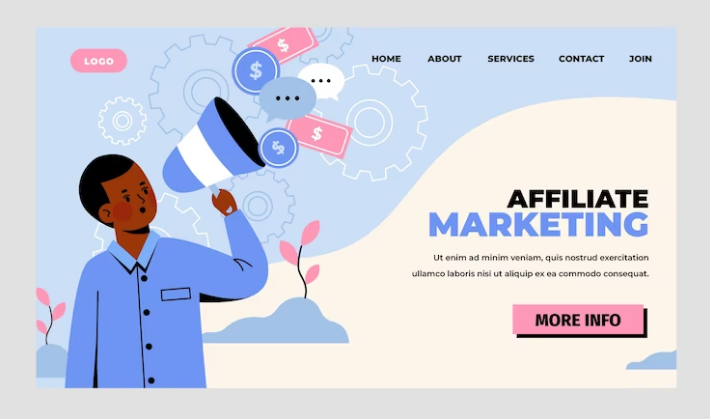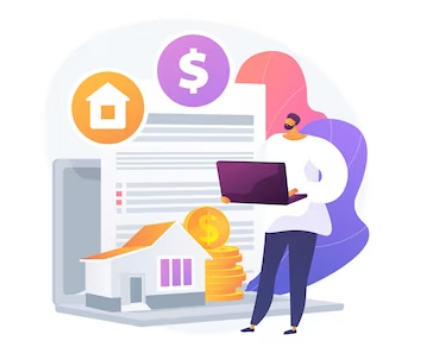
In today's digital age, having a website is essential for individuals, businesses, and organizations to establish an online presence, reach a wider audience, and achieve their goals. Fortunately, creating a website has never been easier, thanks to the plethora of user-friendly tools and platforms available. In this comprehensive guide, we'll walk you through the step-by-step process of creating your own website from scratch, covering everything from planning and design to launch and maintenance.
What Is A Website?
A website is a collection of web pages that are accessible through the internet. These pages are typically interconnected through hyperlinks and are hosted on a web server, making them accessible to users via web browsers. Websites can serve a variety of purposes, including providing information, entertainment, e-commerce, social networking, or online services. They can range from simple static pages to complex dynamic sites with interactive features and databases. Websites are often created using HTML, CSS, JavaScript, and other programming languages and technologies.
What Are The Types Of Website?
Websites can be categorized into various types based on their purpose, content, functionality, and audience. Here are some common types of websites:
-
Informational Websites: These websites aim to provide information on a particular topic, such as news sites, educational resources, blogs, or informational portals.
-
E-commerce Websites: E-commerce websites facilitate online transactions, allowing users to purchase goods or services directly from the website. Examples include online stores, marketplaces, and auction sites.
-
Social Networking Websites: Social networking sites enable users to connect and interact with each other online. They typically include features such as user profiles, messaging, photo sharing, and forums. Examples include Facebook, Twitter, LinkedIn, and Instagram.
-
Blogs: Blogs are websites that feature regularly updated content, often in a chronological format. They can be personal or professional and cover a wide range of topics, such as fashion, technology, travel, or food.
-
Portfolio Websites: Portfolio websites are used by individuals, freelancers, or businesses to showcase their work, projects, skills, or accomplishments. They are commonly used by artists, designers, photographers, and writers.
-
Educational Websites: Educational websites provide learning resources, courses, tutorials, and educational materials on various subjects. They can be used for formal education, self-paced learning, or professional development.
-
Media Sharing Websites: These websites allow users to upload, share, and view multimedia content such as videos, photos, music, or podcasts. Examples include YouTube, Flickr, Vimeo, and SoundCloud.
-
Corporate Websites: Corporate websites are designed for businesses, organizations, or institutions to establish an online presence, promote their products or services, and communicate with customers or stakeholders.
-
Government Websites: Government websites provide official information, services, and resources offered by governmental agencies or departments. They may include information on laws, regulations, public services, and government initiatives.
-
Community Forums/Online Communities: These websites bring together individuals with shared interests or goals to discuss topics, ask questions, and share knowledge or experiences. Examples include Reddit, Quora, and Stack Overflow.
-
Wiki Websites: Wiki websites allow collaborative editing and contribution of content by users. They are often used to create and maintain knowledge bases, encyclopedias, or documentation. Wikipedia is the most well-known example of a wiki website.
-
Personal Websites: Personal websites are created by individuals to share personal interests, hobbies, experiences, or portfolios. They can serve as online resumes, blogs, or platforms for self-expression.
These are just some of the many types of websites that exist, and often, websites may combine features from multiple categories.
How To Build A Website? A Step-by-Step Guide to How To Create A Website For Free
Creating your own website may seem daunting at first, but with the right tools, resources, and guidance, it's entirely achievable. By following the step-by-step process outlined in this guide, you can create a professional-looking website that effectively communicates your message, engages your audience, and helps you achieve your goals online. So roll up your sleeves, unleash your creativity, and get ready to embark on an exciting journey into the world of web design and development. Your website awaits!
Step 1: Define The Purpose and Goals of your website.
Define Your Purpose and Goals Before diving into the technical aspects of website creation, it's crucial to define the purpose and goals of your website. Ask yourself:
- What is the main objective of your website (e.g., showcasing your portfolio, selling products, sharing information)?
- Who is your target audience, and what are their needs and preferences?
- What specific goals do you want to achieve with your website (e.g., increasing sales, generating leads, building brand awareness)?
Step 2: Choose a name for your website.
A domain name is the human-readable address that people type into their web browsers to access a website eg www . wendyscakes . com Domain names are composed of two main parts: the top-level domain (TLD) and the second-level domain (SLD). In our example, wendyscakes is the SLD and .com is out tld.
Your domain name should be short and easy to remember so that users can easily type and access your website without much struggle. Click here to read more about choosing the right domain name for your business
Step 3: Choose a hosting provider.
Select a Web Hosting Provider Web hosting is essential for storing your website's files and making them accessible online. Consider these factors when selecting a web hosting provider:
- Reliability: Choose a hosting provider with a proven track record of uptime and reliability.
- Speed: Opt for a hosting plan that offers fast loading times to enhance user experience.
- Support: Look for a hosting provider that offers responsive customer support to address any technical issues.
Step 2: Register your domain name.
- Check the availability of your desired domain name using a domain registrar like Afrihost or Xneelo.
- Register your domain name through the chosen registrar, keeping it simple, memorable, and relevant to your brand.
Step 4: Install your Wordpress.
There are many website building platforms but this guide will use Wordpress, which is currently the most popular website building platform.
Afrihost and Xneelo provide users with a website installation feature. Once your domain has been registered, your admin backend will guide you with the installation of your site.
WordPress offers flexibility, scalability, and a wide range of themes and plugins for customization.
Step 5: Design Your Website
Once you have a domain name and hosting in place, it's time to design your website. Follow these steps to create an attractive and user-friendly design:
- Choose a website template or theme that suits your brand and objectives.
- Customize the design by adding your logo, brand colors, and relevant imagery.
- Create essential pages such as home, about, services/products, and contact, ensuring clear navigation and readability.
Step 6: Add content.
Add Content and Functionality With the design in place, it's time to add content and functionality to your website:
- Write compelling copy that communicates your message effectively and engages your audience.
- Add multimedia elements such as images, videos, and infographics to enhance visual appeal.
- Incorporate functionality such as contact forms, social media integration, and e-commerce features as needed.
Step 7: Test and Optimize Your Website
Test and Optimize Your Website Before launching your website, it's essential to test it thoroughly to ensure everything is working correctly:
- Check for broken links, typos, and formatting issues across different devices and browsers.
- Test website speed and performance using tools like Google Page Speed Insights and GTmetrix.
- Gather feedback from friends, family, or beta testers and make necessary adjustments to improve usability and user experience.
Step 8: Launch
Launch Your Website Once you're satisfied with the design and functionality of your website, it's time to launch it:
- Point your domain name to your web hosting account by updating the domain's DNS settings.
- Upload your website files to the hosting server using FTP or a file manager provided by your hosting provider.
- Perform final checks to ensure everything is working correctly before announcing the launch of your website.
Step 9: Maintenance and updates
Maintain and Update Your Website Creating a website is just the beginning – you'll need to maintain and update it regularly to keep it running smoothly:
- Install software updates and security patches to protect your website from vulnerabilities and cyber threats.
- Monitor website performance using analytics tools like Google Analytics to track visitor behavior and identify areas for improvement.
- Update content, images, and functionality as needed to keep your website fresh, relevant, and aligned with your goals.
Congratulations! You have just built your own website, now that wasn't very hard, was it?
If you need help and assistance or if you have any questions, feel free to drop me a whatsapp on 067 999 1953 and I will be happy to assist













































